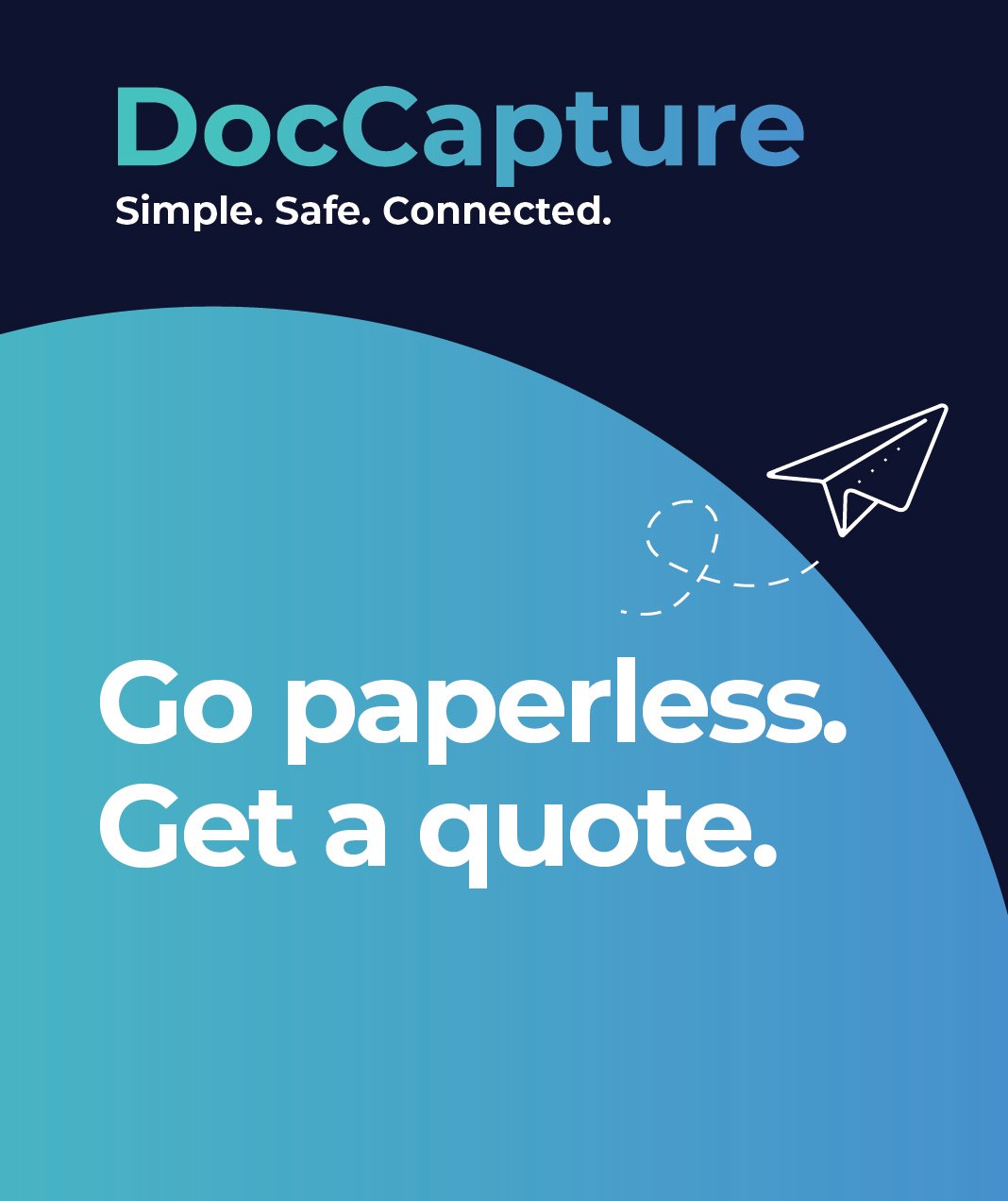Digital Transformation for School Boards: Where to Begin
Table of contents
In today’s K–12 landscape, digital transformation for school boards is no longer a distant goal—it’s a present-day necessity. From complying with complex regulations like FERPA to managing an ever-growing volume of student and staff records, school boards are under increasing pressure to modernize operations while staying within tight budget constraints.
While the term "digital transformation" may sound broad or even overwhelming, a highly practical and cost-effective starting point exists: document scanning. By digitizing paper-based records, school boards can unlock immediate gains in efficiency, security, and compliance—laying a strong foundation for more advanced digital initiatives.
This article explores why scanning is the smart first step in your transformation journey—and how it addresses the most pressing operational and regulatory challenges in K–12 education today.
Why Digital Transformation Matters for School Boards
Modern school boards are navigating a rapidly evolving educational landscape—where expectations for technology, transparency, and efficiency are higher than ever. Parents, staff, and regulatory bodies alike demand quick access to accurate information, secure data handling, and responsive service delivery. That’s where digital transformation for school boards becomes essential.
At its core, digital transformation means shifting from manual, paper-based systems to streamlined digital workflows that enhance decision-making, reduce errors, and save time. For school boards, this includes everything from managing student records to handling human resources and compliance reporting.
Regulations like FERPA and state-level mandates require districts to manage sensitive data with utmost care—often exposing the limitations of outdated legacy systems. These platforms, while once effective, are now sources of inefficiency, data silos, and maintenance challenges. In contrast, digital solutions offer transparency, scalability, and the agility needed to adapt to policy or enrollment changes.
For a deeper dive, see our post on Digital Transformation for School Boards, which outlines how modernization strategies help districts remain compliant, efficient, and future-ready.
The Burden of Paper-Based Processes
Despite the growing push toward modernization, many school boards still rely heavily on paper-based workflows. Student cumulative folders, HR documents, special education records, and administrative files often fill up entire rooms—or even offsite storage facilities. Managing these physical records isn't just inefficient; it's risky and expensive.
First, there’s the challenge of scale. Thousands of files across decades of student and staff history are difficult to track and retrieve. Manual filing systems are prone to human error, misplacement, and time delays that hinder productivity and responsiveness.
Second, paper records present a serious compliance and security risk. Documents can be lost, damaged, or accessed by unauthorized individuals. FERPA and other regulations require stringent access controls and retention policies—requirements that paper systems simply aren’t equipped to meet.
Third, staff hours are consumed by labor-intensive manual processes like filing, searching, duplicating, and securely disposing of documents. These activities eat into limited administrative budgets and take time away from higher-value tasks.
To explore how digitization addresses these issues head-on, visit our pages on Document Scanning for Schools and Student Records Scanning.
Why Document Scanning is the Ideal First Step
For school boards seeking momentum in their digital transformation journey, document scanning is a strategic, low-risk move that delivers measurable benefits early on. It’s not just about converting paper to pixels—it’s about transforming how information is stored, accessed, and protected.
1. Immediate Operational Gains
Digitized records are easy to search, retrieve, and share, enabling faster decision-making and better service for students, staff, and stakeholders. These “quick wins” build organizational buy-in and demonstrate the value of transformation early in the process.
2. Seamless Integration Potential
Unlike legacy formats, scanned documents can be stored in open, cloud-compatible formats that integrate with Student Information Systems (SIS), Human Resource Information Systems (HRIS), and ERP platforms. This ensures your digital records can evolve alongside your broader IT infrastructure.
3. Cost-Effective and Scalable
Scanning projects can be tailored to fit tight educational budgets. Whether starting with a specific record type or digitizing by department, document scanning is scalable and can be expanded over time—without overcommitting financially.
4. Improved Compliance and Audit Readiness
Digital records make it easier to enforce FERPA compliance with features like access controls, audit trails, and data encryption. And when audit season arrives, having searchable digital files significantly reduces prep time and stress.
5. Reduced Physical Storage Costs
Digitization dramatically cuts down on the need for filing cabinets, storage rooms, and offsite archives—freeing up valuable space and budget.
Ultimately, document scanning acts as a gateway to broader transformation by making foundational improvements that align with security, compliance, and cost-saving goals.
For more insights on impact, check out our article on the Impact of Document Scanning on School Boards.
Addressing Common Concerns
While the benefits of scanning are clear, school board leaders often raise important questions before moving forward. Let’s address some of the most common concerns to clarify why document scanning remains a smart, secure, and cost-effective investment.
“Will it integrate with our systems?”
Yes. Most modern scanning solutions use open file formats (like PDF/A or TIFF) that are compatible with the systems school boards already rely on—whether it’s SIS, HRIS, or ERP platforms. Additionally, scanned documents can be uploaded into cloud storage or content management systems that offer API-level integration and indexing, ensuring a smooth transition from paper to digital.
“What about security?”
Security is a top priority. Leading scanning providers offer robust safeguards including:
-
Encryption for data in transit and at rest
-
Access controls to limit who can view or edit sensitive files
-
Audit trails that track document activity for compliance
These features not only meet but often exceed the requirements of FERPA, state mandates, and internal IT policies.
“Is it worth the cost?”
Absolutely. While there is an upfront investment, scanning pays off by reducing storage costs, minimizing compliance risks, and freeing up staff time. Moreover, digitized systems improve resilience—no more lost files due to water damage, misplacement, or outdated filing systems.
In fact, the long-term ROI of scanning often includes cost avoidance in legal discovery, reduced administrative overhead, and better responsiveness during audits.
To see how scanning fits into the broader strategy, explore the Impact of Document Scanning on School Boards.
Conclusion
As school boards face mounting pressures to improve compliance, reduce costs, and modernize operations, digital transformation is no longer optional—it’s essential. But that transformation doesn’t need to start with a massive overhaul. Document scanning offers a smart, scalable, and low-risk first step that delivers immediate value.
By digitizing student records, HR files, and administrative documents, school boards can enhance operational efficiency, strengthen data security, and better meet regulatory requirements like FERPA. More importantly, scanning paves the way for broader digital initiatives—setting your district up for long-term success.
Ready to take the first step? Contact us to learn how DocCapture helps school boards simplify compliance and modernize records management. Fill out our “get a quote” form to get started today.
Share this
You May Also Like
These Related Stories

Boosting School Board Efficiency with Document Scanning Technologies

How School Boards Can Cut Costs with Document Scanning Solutions

